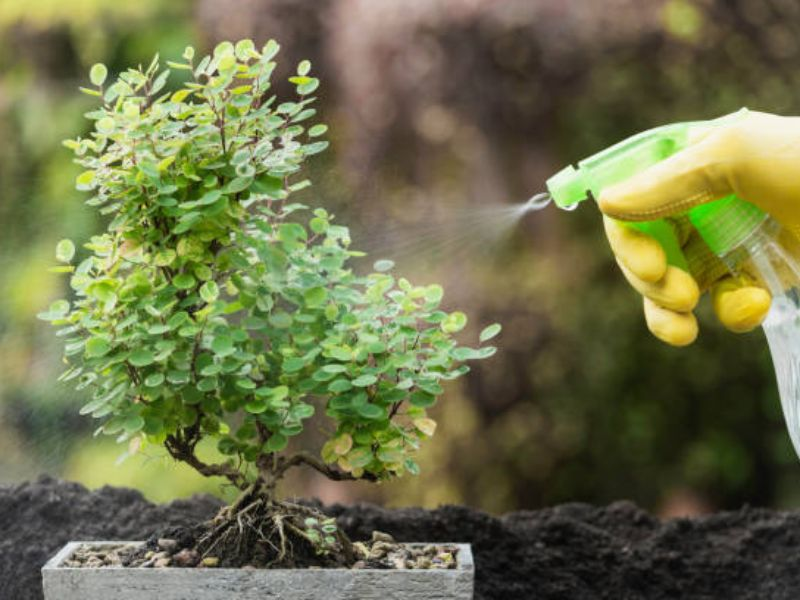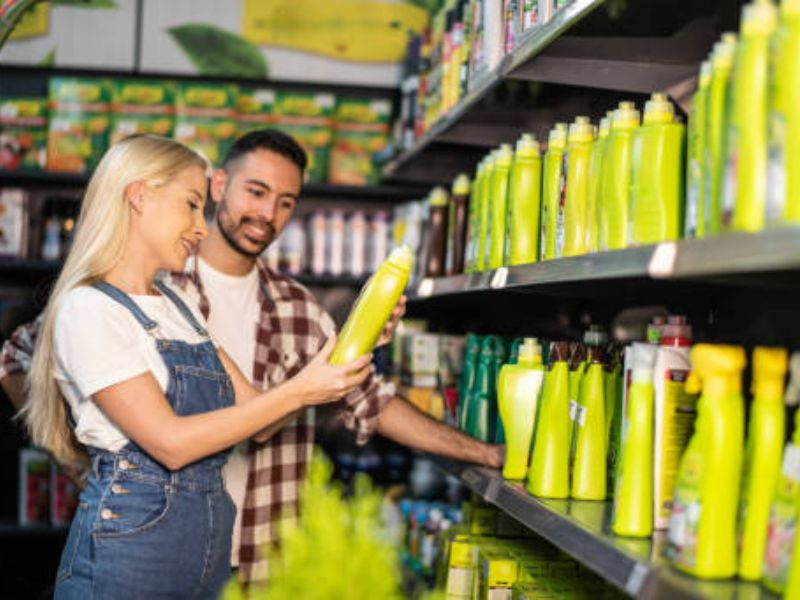Choosing the best liquid fertilizer for bonsai is crucial for anyone dedicated to nurturing these miniature masterpieces. Fertilization is not just about providing food; it’s about sustaining the delicate balance that ensures robust health and growth in bonsai trees.
This intricate form of gardening requires precision, and liquid fertilizers offer the control and immediacy needed for the meticulous care of bonsai. They seep directly into the bonsai soil, delivering essential nutrients in a readily available form.
As we delve into the world of bonsai care, we will explore how to harness liquid fertilizers to maintain your bonsai’s vitality and aesthetic grace, ensuring it continues to thrive as a living work of art.
Understanding Bonsai Nutritional Needs

To cultivate a bonsai that captures the essence of nature in miniature, understanding its nutritional needs is fundamental. Bonsai trees, like all plants, require a mix of essential nutrients that serve pivotal roles in their development, and utilizing organic fertilizer can be instrumental in this process.
Nitrogen is the key to foliage growth, giving leaves their vibrant green hue, and contributing to the overall health of the plants. Phosphorus supports the development of strong roots and stimulates flowering, while Potassium fortifies the plant’s overall vigor, helping it resist diseases and endure stress, ensuring you have healthy plants.
This trio of nutrients, commonly referred to as NPK, is the cornerstone of any fertilization regimen, whether one opts for organic or synthetic fertilizers. However, the precise needs of a bonsai can vary significantly across different species and even individual trees.
A young, vigorously growing bonsai may require more nitrogen to support its foliage growth, while a mature bonsai tree might benefit from a formula higher in phosphorus and potassium to encourage flowering and root development.
The art of bonsai fertilization lies in tailoring the NPK balance to the tree’s specific stage of growth and seasonal needs, ensuring a harmonious healthy growth cycle.
Bonsai enthusiasts must also consider the unique requirements posed by the species of their trees. A tropical bonsai will have different nutritional needs compared to a coniferous or deciduous tree. It’s this intricate attention to detail that transforms routine feeding into a bespoke nourishment plan, tuned to each bonsai’s distinct rhythm of life.
The Advantages Of Liquid Fertilizers For Bonsai
Liquid fertilizers offer a spectrum of advantages for the bonsai aficionado, primarily due to their ease of use and efficient nutrient delivery, making them a strong contender for the best liquid fertilizer for bonsai.
When it comes to feeding your bonsai, the liquid form can be a game-changer. These fertilizers dissolve in water, creating a solution that the roots can easily absorb, providing your bonsai with its nutritional fix almost instantaneously. This can be particularly beneficial after repotting or during the peak growing seasons when bonsai plants are most hungry for nutrients.
You can measure and apply liquid fertilizers with precision, allowing bonsai caretakers to meet their trees’ exact nutritional needs. A measured approach prevents both underfeeding and the potentially more dangerous overfeeding.
Generally, application involves mixing a specified amount of liquid bonsai fertilizer with water, according to the product’s instructions, and applying it directly to the soil surface. This method ensures even distribution of nutrients throughout the bonsai soil, providing consistent feeding.
Liquid Vs. Solid Bonsai Fertilizers
When we compare liquid fertilizers with solid forms like pellets or spikes, the differences are quite notable. Bonsai fertilizer pellets and spikes release nutrients slowly over time as they break down, which can be advantageous for maintaining a steady supply of plant food. However, they lack the immediacy and control that liquid fertilizers offer.
With liquids, you can adjust the feeding schedule and composition with each watering, responding to your bonsai’s current condition and growth stage — a level of responsiveness that’s harder to achieve with slow-release solids.
The choice between liquid and solid fertilizer often comes down to the needs of the bonsai and the preferences of the grower. Liquid fertilizers prove particularly effective during the growing season or when your bonsai requires a quick nutrient boost.
For those seeking a more controlled and responsive approach to bonsai nutrition, liquid fertilizers are an invaluable tool in the gardener’s arsenal.
Types Of Liquid Fertilizers
Navigating the world of liquid fertilizers can be like walking through a dense forest – there are many paths to take, each with its own set of considerations. At the heart of the decision-making process are two main categories: synthetic and organic liquid fertilizers.
- Synthetic liquid fertilizers are scientifically formulated to provide a quick supply of nutrients. Often seen as a fast-acting solution, they can spur rapid growth and are particularly useful during a bonsai’s active growing phase. However, the trade-off can include a higher risk of nutrient burn if applied too liberally, as well as potential long-term soil degradation.
- Organic liquid fertilizers, on the other hand, are derived from natural sources such as fish emulsion, seaweed, or compost teas. These not only feed the bonsai but also enrich the soil with beneficial microorganisms, promoting a more sustainable approach to bonsai cultivation. While they release nutrients more slowly, they form a symbiotic relationship with the soil, improving its structure and fertility over time.
When comparing specialty bonsai liquid fertilizers to general-purpose products, the former is typically tailored to meet the specific needs of bonsai trees, which can vary significantly from other potted plants.
These specialty fertilizers may have a more balanced nutrient profile suited to the unique growth patterns of bonsai. General-purpose fertilizers, while more readily available and often less expensive, may not always meet the nuanced requirements of bonsai, potentially leading to imbalances.
How To Choose The Right Liquid Fertilizer For Your Bonsai

Selecting the best liquid fertilizer for bonsai is akin to choosing a well-balanced diet for yourself—it requires an understanding of individual needs and lifestyle. This translates to recognizing species-specific requirements, soil composition, and the tree’s current phase of growth in your bonsai.
Each species of bonsai has its own ideal nutritional profile. For instance, flowering species might need a fertilizer with a higher phosphorus content to promote blooms, while a juniper may require one with higher nitrogen for foliage development.
The type of soil in your bonsai pot also plays a crucial role. Bonsai soil is designed to drain quickly, which means nutrients can also leach out rapidly. A liquid bonsai fertilizer that is easily assimilable can compensate for this fast drainage, ensuring your bonsai doesn’t starve. Moreover, considering the growth phase of your bonsai is critical.
A younger, developing bonsai will benefit from a different nutrient mix compared to a mature, established tree.
Nutrient deficiencies manifest in various ways, such as yellowing leaves (indicating a lack of nitrogen), weak root growth (a sign of phosphorus deficiency), or brown edges on leaves (potentially a potassium shortage). When such symptoms appear, a targeted application of the right liquid bonsai fertilizer can make all the difference, addressing the deficiency before it impedes your bonsai’s vigor.
When choosing a fertilizer, look for a product that offers a balanced NPK ratio suitable for most bonsai trees and conditions. However, be prepared to switch formulas if your bonsai enters a different growth stage or displays signs of deficiency.
Application Tips And Best Practices
The secret to mastering the use of liquid fertilizer for bonsai lies not only in what you apply but also in how and when you do it. Using organic fertilizers and adhering to best practices in application will ensure that your bonsai thrives without the risk of damage from over-fertilization.
- Quantity and Frequency: Determining how much fertilizer to use is essential. Less is often more with bonsai. Start with a weaker solution than recommended and observe how your bonsai responds. Frequency should align with the growth cycle—more frequent applications during the growing season (spring and summer) and reduced feeding in the fall, ceasing in winter when many bonsai enter a period of dormancy.
- Seasonal Considerations: Seasonal changes greatly influence a bonsai’s nutritional needs. During spring, a balanced NPK ratio supports emerging foliage, while late summer calls for a lower nitrogen mix to encourage healthy root growth and prepare the plant for the cooler months ahead. Aligning your fertilizing routine with these seasonal needs is crucial for maintaining the health and aesthetic quality of your bonsai.
- Preventing Over-Fertilization: Over-fertilization can lead to salt build-up in the soil, root burn, and unhealthy growth. To prevent this, ensure proper drainage in your bonsai pot and flush the soil with water periodically to wash away excess salts. If you notice signs of over-fertilization, such as a white crust on the soil surface or leaf burn, reduce the concentration of your fertilizer and increase the intervals between applications.
Regular monitoring and adjustment are key. Keeping a close eye on the health of your bonsai and being flexible in your fertilizing approach will prevent issues and support a resilient and stunning bonsai display.
Monitoring Your Bonsai’s Health
Vigilant monitoring after fertilizer application is crucial to ensure that your bonsai not only survives but thrives. Healthy bonsai growth manifests in firm, richly colored leaves, robust stems, and, depending on the species, vibrant blossoms or fruit. The soil should be lively too, with a healthy microbial ecosystem evident in its structure and smell.
After administering liquid fertilizer, watch for signs that your bonsai is benefiting from the added nutrients. New growth should appear vigorous and not leggy or discolored, which can indicate an imbalance. If your bonsai displays lush foliage and maintains its traditional form, it’s a sign that you’re on the right track with your fertilization routine.
However, if you notice signs of distress, such as yellowing leaves or stunted growth, it may be time to reassess your approach. This could involve adjusting the frequency, quantity, or type of fertilizer you’re using. Remember, each bonsai is unique and what works for one may not work for another. It’s important to respond to the specific reactions of your bonsai to create a tailored care regimen.
Conclusion
As we’ve explored, understanding the unique requirements of your bonsai and responding with the right fertilization can make all the difference in its health and growth. We have journeyed through the essential knowledge needed to make an informed choice about liquid fertilizers, weighing their benefits against the needs of our miniature trees.
In bonsai, every detail matters, and the selection of a fertilizer is no exception. Your dedication to learning and adapting your care techniques will be mirrored in the flourishing of your bonsai. Let the insights you’ve gained here guide you to a fertilizer choice that ensures your bonsai remains not only a testament to natural beauty but also to your nurturing touch.
As we conclude our guide, consider exploring Leaves and Soul on Amazon. Our store is dedicated to offering products that aim to enhance the life and vibrancy of your bonsai, curated with care and expertise.
Remember, the best liquid fertilizer for bonsai is the one that aligns with your tree’s needs and your personal care regimen, fostering a harmony that transcends the aesthetic. It’s in this harmony where the true spirit of bonsai is realized, and where its peaceful essence can be fully appreciated.





0 Comments